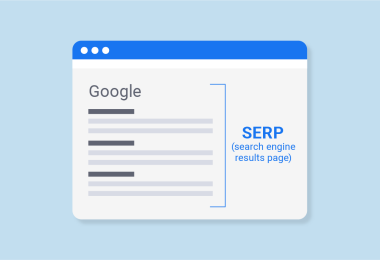SEO rankings show where your website appears in search engine results for specific keywords.
Higher rankings bring more visitors and better chances for conversions. Tracking these rankings helps you see how your work impacts visibility and shows where you can improve.
Regularly checking your SEO ranking keeps your strategy aligned with search engine updates and helps you stay competitive.
In this guide, we’ll explore how to track SEO progress effectively, so your site keeps growing and reaching new audiences.
What to track
To get a true picture of SEO performance, monitor these core metrics. Each one offers specific insights into visibility, relevance, and engagement in search results.
- Position Changes for Main Keywords
Tracking keyword rankings for key terms shows how effectively your content aligns with user intent and meets the demands of search engines. An increase in rankings confirms that your content strategy aligns with search intent and competitiveness. Ranking data reveals growth and stability, helping you pinpoint when algorithm updates or competitor actions impact your position. Rush Analytics Rank Tracker provides this data in real-time, allowing you to observe shifts, recognize patterns, and adjust strategies to maintain or improve your rankings. - Click-Through Rates (CTR) from Search Results
CTR reveals how often people click on your site after seeing it in search results. A low CTR, despite a high ranking, signals that your title and meta description might not be compelling or aligned with user intent. Conversely, a high CTR validates that your messaging resonates. By optimizing these elements, you can capture more search traffic and make each ranking position work harder for you. - Search Volume for Tracked Terms
Monitoring search volume keeps you updated on keyword popularity. Search volumes can fluctuate seasonally or reflect evolving user interests. Tracking this helps you prioritize efforts on keywords that offer consistent, high-impact traffic and informs you when it might be strategic to target new, rising terms. - Ranking Pages for Each Keyword
Knowing which of your pages ranks for a keyword ensures your content strategy aligns with search intent. Ideally, each keyword should be tied to the page most relevant to user queries. If unintended pages rank, it may confuse users and lower conversions. Regularly reviewing this alignment helps keep your content organized, targeted, and able to meet specific user needs.
How to track
To measure SEO progress accurately, track metrics that give insights into visibility, relevance, and performance. Here’s why each metric matters and which tools make it easier to track them.
Position Changes
- Why It’s Important:
Monitoring changes in keyword rankings reveals how well your content meets user intent and satisfies search engine requirements. When rankings increase, it’s a strong indicator that your strategy is successfully aligning with search intent and competitiveness. By tracking these rankings, you can observe growth and stability, as well as identify the influence of algorithm updates or competitor actions on your positions. - Tools to Use:
Rush Analytics Rank Tracker provides real-time ranking data, enabling you to detect shifts, spot trends, recognize patterns, and adapt strategies to preserve or improve keyword rankings.
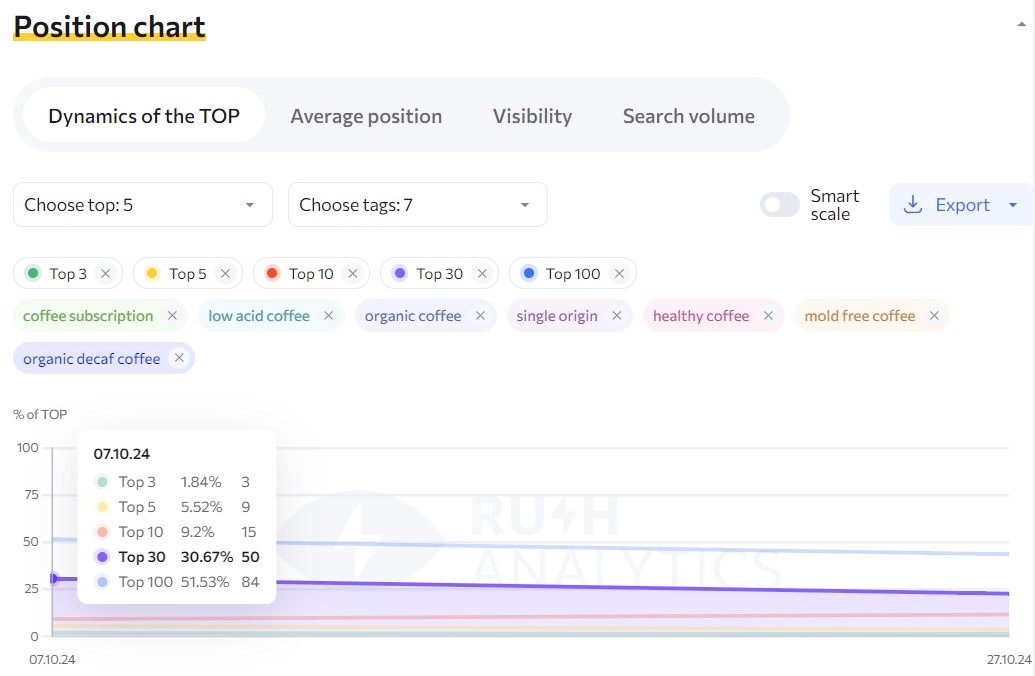
Search Volume for Tracked Terms
- Why It’s Important:
Keeping an eye on search volume for each keyword helps maintain a strategy focused on terms with verified or growing user interest. It reveals the frequency of searches, guiding you to prioritize topics that resonate with your audience. Fluctuations in search volume highlight changing audience interests or seasonal trends, signaling opportunities to optimize or expand keyword targets. - Tools to Use:
Rush Analytics Search Volume Checker delivers accurate data for each keyword, helping you capitalize on high-traffic opportunities and adjust your strategy in line with demand.
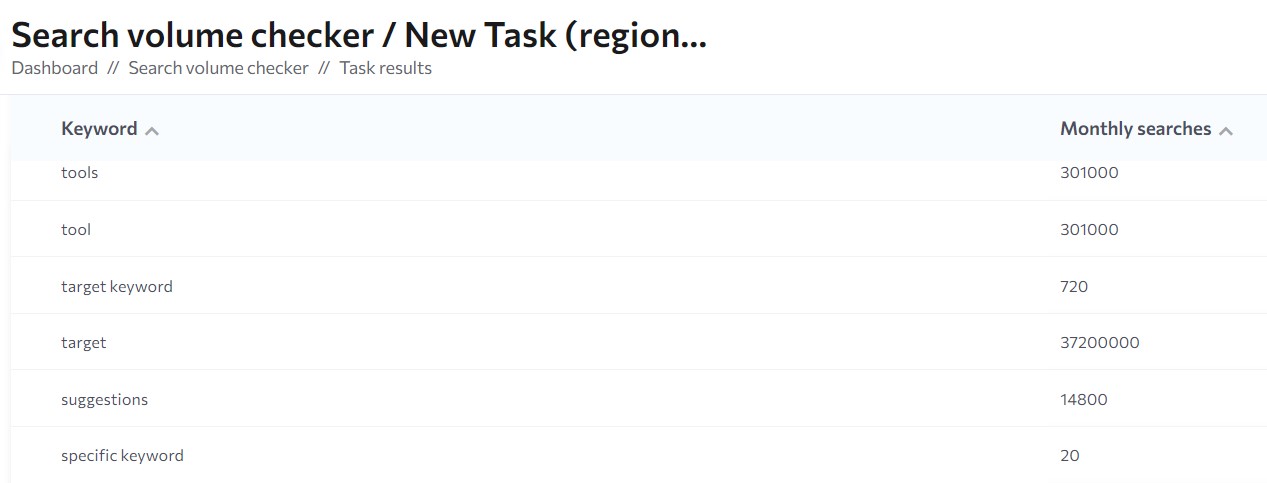
Which Pages Are Ranking for Each Keyword
- Why It’s Important:
Knowing which pages rank for each keyword ensures that your content remains relevant and aligned with user needs. This metric shows if the right pages are appearing for your targeted keywords, confirming that your SEO performance is effectively connecting with users. If unexpected pages rank, it may signal content or on-page SEO issues that need refinement. - Tools to Use:
Rush Analytics Rank Tracker identifies the ranking pages automatically, allowing you to monitor content relevance and make targeted updates where needed.

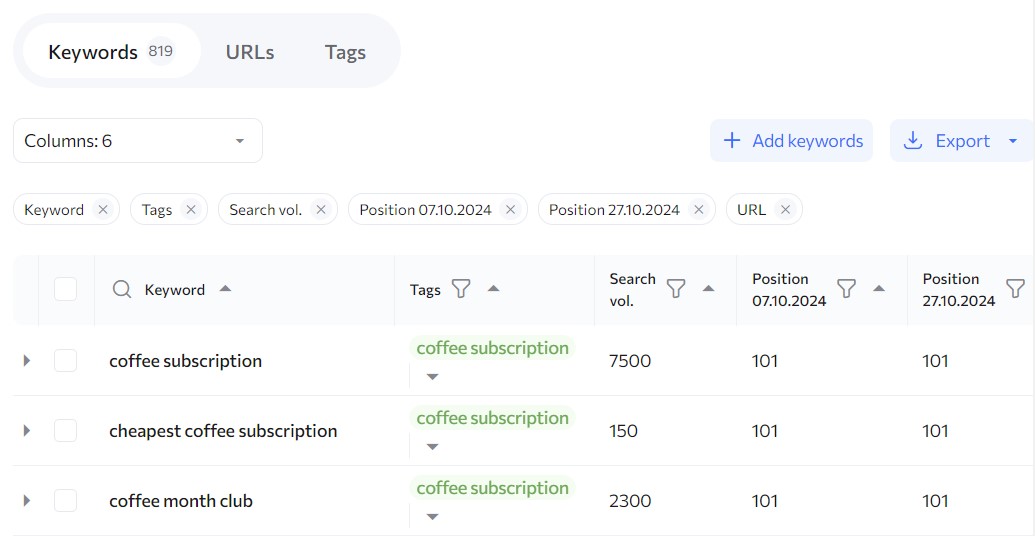
How to choose keywords to track
Choosing the right keywords for tracking is the foundation of an effective SEO strategy. Focusing on specific, relevant terms helps you understand where your site stands and allows for precise, actionable insights.
- Identify Traffic-Generating Terms
A solid place to start is with terms that already bring traffic to your site. Quick Tip: Analyze your Google Search Console data to see which keywords are already working for you. These keywords are likely to have strong relevance to your audience and offer immediate opportunities to measure and improve ranking positions. - Set Clear Goals for Tracking
Consider what you want to achieve with each keyword. For example, tracking branded keywords can tell you how visible your brand is in search, while non-branded keywords can reveal how effectively you reach new audiences. Aligning keywords with goals keeps your tracking focused and strategic. - Keep the Initial List Manageable
Start with a focused list of 20–30 keywords. This lets you concentrate on the most impactful terms without overwhelming your tracking process. As you optimize and gain insights, you can expand to cover more terms that align with new goals or growth areas. - Look for Intent-Based Keywords
Choose keywords that align with user intent, whether informational, navigational, or transactional. Keywords tied to user intent reveal how well your site meets the needs of visitors at various stages of their journey. By including intent-based terms, you ensure that tracking data reflects how your content answers the real questions and needs of your audience.
Starting with clear, relevant keywords lets you track SEO performance meaningfully and ensures that your monitoring is both manageable and actionable.
How often to check SEO rankings
The frequency of checking SEO rankings depends on your website’s goals, keyword competitiveness, and the industry’s pace of change. Here’s a breakdown of these factors:
- Goals and Campaigns
If you’re running a time-sensitive campaign or tracking a new content launch, frequent checks—every few days—can help you respond to quick changes. Frequent monitoring captures shifts in ranking due to recent updates or audience interest, allowing for timely adjustments. - Keyword Competitiveness
Highly competitive keywords require closer monitoring, as rankings in these niches fluctuate frequently. Weekly checks let you spot changes in competitive landscapes and respond with adjustments in real time. For less competitive keywords, bi-weekly or monthly checks may be enough, as rankings tend to be more stable. - Industry Dynamics
Rapidly evolving industries, like tech or e-commerce, often demand weekly ranking reviews to keep pace with changes in user behavior or competitor strategies. In contrast, stable industries (e.g., local services) may benefit from monthly reviews, focusing on longer-term ranking trends without daily fluctuations.
Other important metrics
While SEO rankings typically refer to keyword positions, several additional metrics show how well your site is performing in search. These metrics go beyond position tracking and provide insights into audience behavior, engagement, and the quality of traffic your SEO efforts attract.
Organic Traffic
Organic traffic reveals the volume of visitors reaching your site through search engines, reflecting how well your content matches user queries. This metric is fundamental for assessing visibility and engagement from non-paid sources.
- Why It’s Important: Tracking organic traffic helps you identify content that successfully attracts users and meets their needs. A consistent increase in organic traffic indicates that your SEO efforts are expanding your site’s reach and driving quality visits. Sudden drops, however, can highlight technical issues or algorithm shifts.
- Tools to Use: Google Search Console and Google Analytics track organic traffic, giving insights into user flow, engagement rates, and exit points. Analyzing which pages attract the most organic visitors helps you identify effective strategies and adapt underperforming content.
Click-Through Rates from Search Results
Click-through rate (CTR) shows the percentage of users who click on your link after seeing it in search results. High CTR usually signals that your content resonates with user intent.
- Why It’s Important: CTR shows how relevant and appealing your title and meta description are to searchers. A high CTR suggests your listing stands out in search results, while a low CTR—even with high rankings—may signal a need to refine meta tags for clarity and relevance.
- Tools to Use: Google Search Console provides CTR data at the page and keyword levels. Regularly monitoring CTR helps you adjust titles and descriptions to improve click potential, attracting more visitors to your site.
Impressions
Impressions measure how often your site appears in search results, regardless of clicks. This metric provides a broad view of your visibility for specific terms.
- Why It’s Important: Impressions reveal your potential audience reach, showing how often users encounter your content in search. Increasing impressions, especially for targeted keywords, signals improving relevance and potential for growth in clicks and engagement.
- Tools to Use: Google Search Console allows you to track impressions by keyword and page, providing insights into visibility changes as you refine content or target new search terms.
Conversions
SEO doesn’t directly drive conversions, but tracking them reveals whether your SEO performance brings visitors who take meaningful actions. Conversion data goes beyond traffic and rankings to show how well your site performs in attracting engaged users. Here’s why conversion tracking is important:
- Quality of Search Traffic
- Different keywords attract varied visitor quality: Some keywords bring in casual browsers, while others attract users ready to act, resulting in varied organic search traffic quality.
- Identifying high-value search terms: Conversion tracking highlights which keywords drive real clients, not just visitors.
- Strategic SEO focus: By concentrating on high-converting keywords, you can refine your SEO strategy to attract visitors more likely to engage with your business.
- Return on Investment (ROI) from SEO
- SEO requires investment: SEO success takes time, budget, and resources.
- Conversion tracking to measure returns: Monitoring conversions with Google Analytics allows you to calculate the returns on these investments accurately.
- Justifying the SEO budget: Conversion data helps demonstrate SEO’s impact to stakeholders, making it easier to support budget proposals by showing its influence on revenue.
- Sales Funnel Optimization
- High rankings and traffic are only a starting point: Conversions are the end goal, not just visibility.
- Pinpointing conversion gaps: If traffic grows without a similar rise in conversions, the issue may lie with the landing page, user experience (UX), or the offer itself.
- Improving the sales funnel: Conversion tracking exposes weak points in the user journey, enabling targeted improvements that transform traffic into measurable results.
Competitors’ Changes
Tracking competitor performance in search engines reveals shifts in visibility and identifies where they may be gaining traffic or ranking advantages. Observing changes in their keyword rankings, content focus, and traffic sources helps you refine your own strategy.
- Why It’s Important: Analyzing competitor SEO performance helps you understand where your keyword rankings stand relative to theirs, highlighting gaps and opportunities.
- Tools to Use: Rush Analytics Rank Tracker and Ahrefs provide data on competitor rankings, top-performing pages, and traffic sources. Monitoring these metrics helps you discover content gaps and optimize your focus on terms that competitors are capitalizing on.
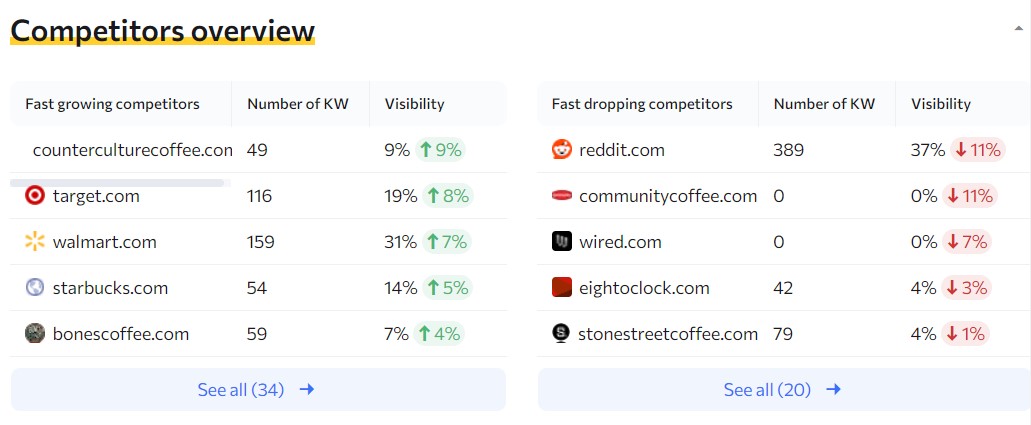
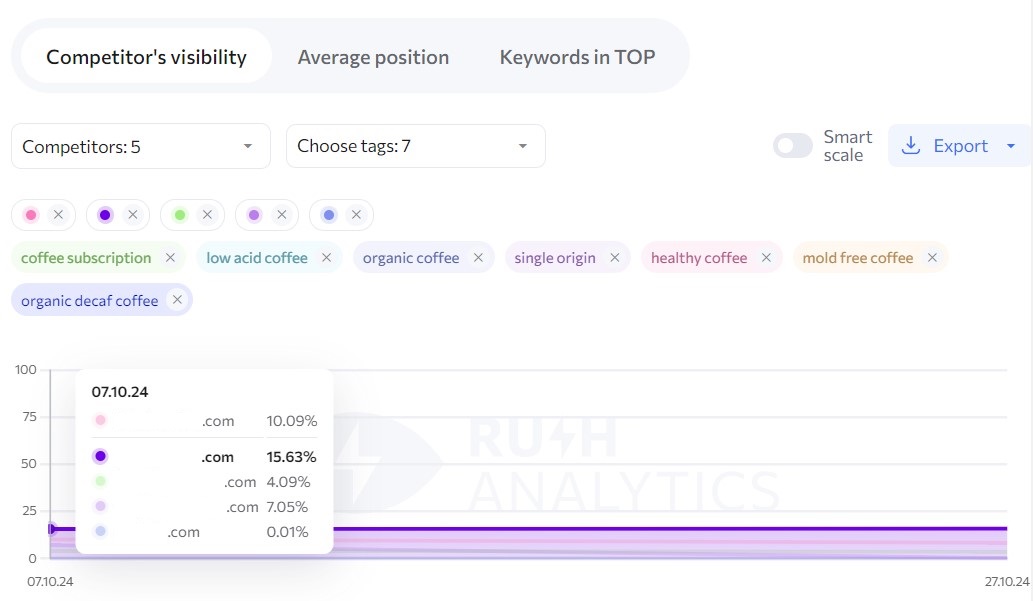
Tools to use
To wrap things up, here’s a quick reference table of tools and the SEO tasks they can help you accomplish. This table highlights each tool’s specific role, making it easy to choose the right one for your needs.
| Task | Tool | Purpose |
| Track keyword positions | Rush Analytics Rank Tracker | Monitor real-time keyword rankings and identify position changes |
| Check search volume for terms | Rush Analytics Search Volume Checker | Discover search volume data to prioritize high-impact keywords |
| Identify pages ranking per keyword | Rush Analytics Rank Tracker | Automatically see which pages rank for each keyword to optimize for search intent |
| Track organic traffic | Google Search Console & Google Analytics | Measure the volume and behavior of visitors reaching your site organically |
| Monitor click-through rates (CTR) | Google Search Console | Analyze the percentage of users clicking on your site from search results to optimize listings |
| Check impressions | Google Search Console | See how often your site appears in search results, even without clicks, to gauge visibility |
| Track conversions | Google Analytics | Assess the actions visitors take, such as sales or sign-ups, to measure SEO performance |
| Analyze competitors’ performance | Rush Analytics Rank Tracker & Ahrefs | Monitor competitor rankings, top pages, and traffic patterns to refine your strategy |
Free 7 days access to all tools. No credit card required!
Попробовать бесплатно
FAQs
How is SEO ranking measured?
SEO ranking is measured by tracking keyword rankings across search results, assessing visibility and relevance over time. Tools like Rush Analytics Rank Tracker and Google Search Console show keyword positions, visibility, and performance trends over time.
How do I track SEO on Google?
Use Google Search Console and Google Analytics. Search Console provides keyword positions, click-through rates, and impressions, while Analytics gives insights into organic traffic, user behavior, and conversions.
Which important metrics shall I track?
Focus on keyword positions, organic traffic, click-through rates, and conversions. These metrics reveal your site’s visibility, engagement, and traffic quality, guiding your SEO strategy and improvements.




